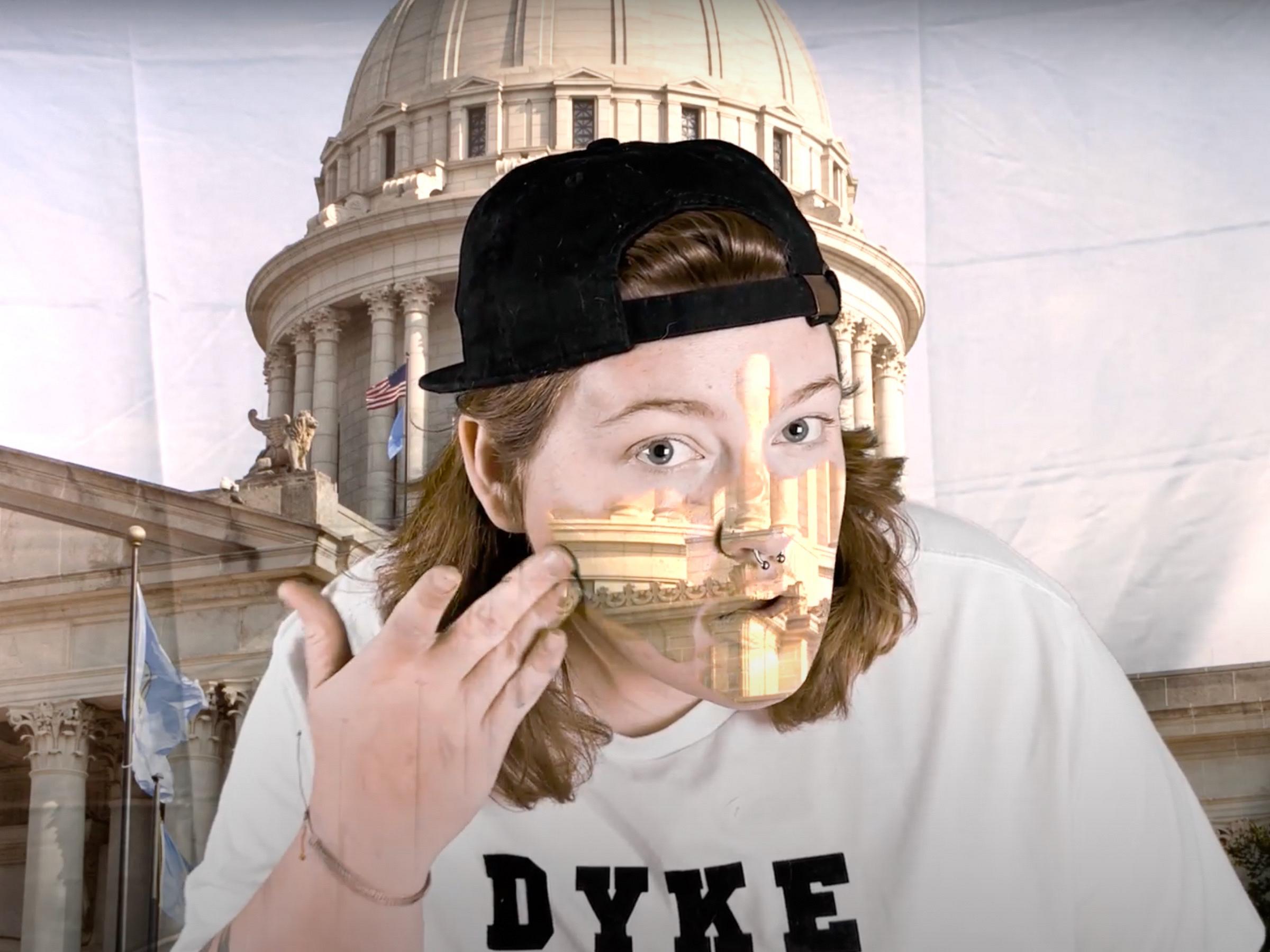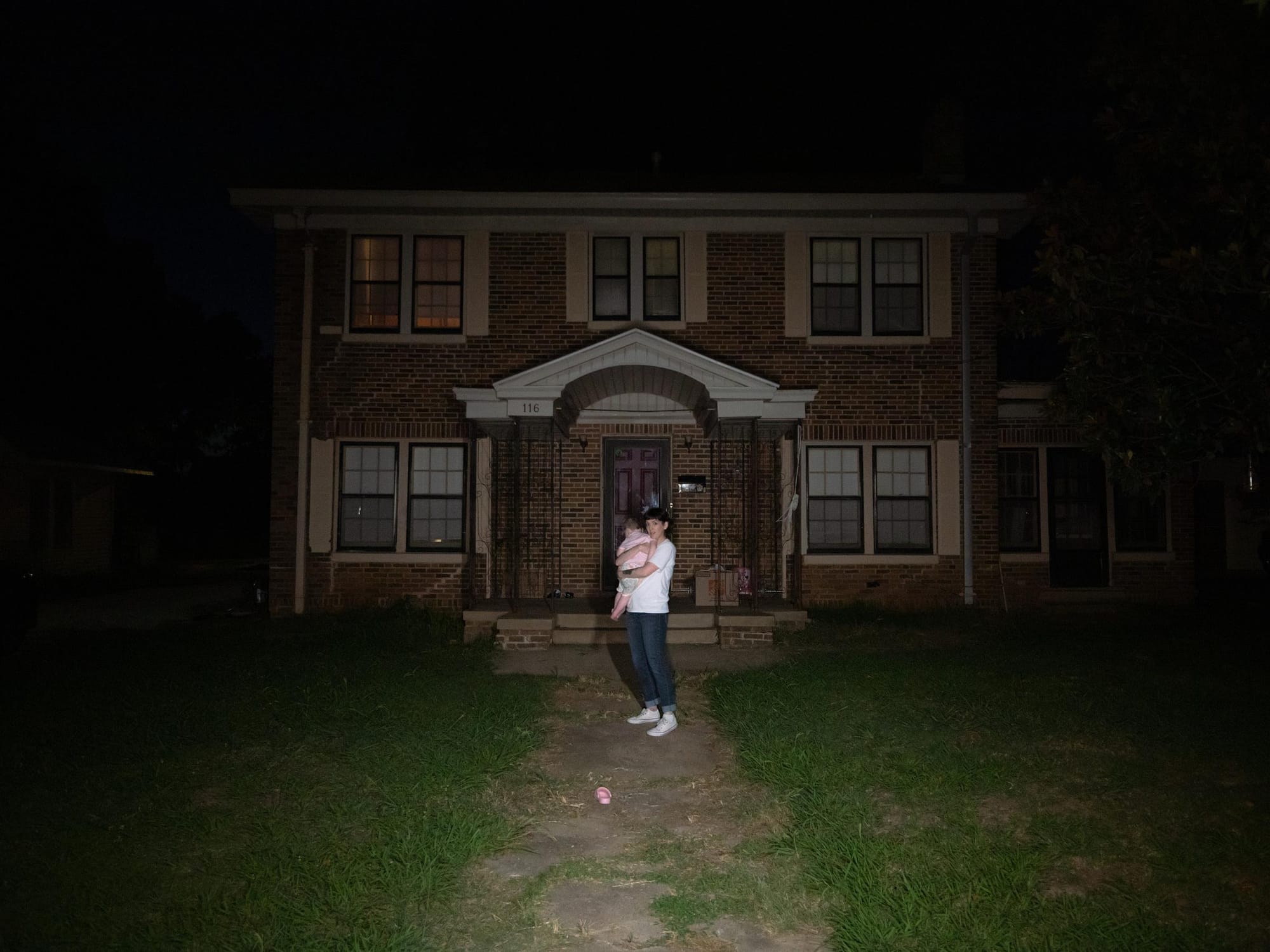In April, The Oklahoman reported that Oklahoma ranked lowest in gender equity nationally. Additionally, Equaldex’s 2023 Equality Index placed the state at #47 for LGBTQ+ rights. These metrics, along with the daily experiences of fear and marginalization they reinforce, set the stage for the group exhibition “Is Everything Okay?,” on view at Positive Space through Sept. 30.
Curated by Tulsa-based artist Allison Ward, “Is Everything Okay?” consists of 18 works of photography, sculpture, video, and sound that honor the mundane and extraordinary lives of femme and queer Oklahomans. In doing so, the show embraces vast tonal shifts, accommodating both haunting and humorous works and highlighting the simultaneously disturbing and absurd nature of identity-based discrimination.
On the haunting end of the spectrum are works like Destiny Green’s uncanny photograph Home, which features a figure in a white shirt and cuffed jeans holding a child outside a dimly lit two-story brick house, staring at the camera with an expression like a deer in headlights.

Another haunting photograph is Emily Singleton’s Getting Ready, in which three figures apply makeup around a vanity while, outside the trio’s window, a fourth figure approaches the house. The approaching figure, whose face is obscured by window blinds, seems to represent an outsider looking in on established rituals of femininity.

Conversely, artists like Zoey Hughes use humor to navigate exclusion and bias. In her video How to be a Lesbian in the South, Hughes performs skits illustrating actions like French kissing a blowup doll, eating baked beans out of a can, and the art of “blending in” (this involves Hughes casually smearing chroma key paint on her face until she disappears into the greenscreen behind her). Hughes’ self-aware irony softens the harsh realities of life in Oklahoma, where LGBTQ+ individuals still lack basic protections in schools, hospitals, and workplaces.

The vulnerability at the heart of Hughes’ bombastic humor is echoed in Cassidy Frye’s soft sculpture This Foundation Won’t Hold. Here, gray duck canvas is sewn and stuffed to resemble concrete masonry units and piled on a handmade rug. The rug depicts green grass on which a white picket fence, the defining symbol of Americana, has been leveled by an impossibly plush cinder block.
The irony of Frye’s sculpture is both material and symbolic, and its meaning remains open to interpretation. It might imply that the foundation of American society, with its inherent inequalities, was never strong enough to build upon. Another more optimistic reading suggests that it is precisely this softness — this radical vulnerability — that holds the potential to topple society’s current delusions of conformity and to break down the metaphorical fences that divide us.
Likewise, the show as a whole, which also includes work by Miss Irie Blues, Hailey Clooney, Blessing Etumador, Street Juice, Rachel Minick, and Ward herself, is bound together by cords of vulnerability, trust, and reciprocity. This eclectic exhibition might just inspire the soft revolution Oklahoma needs.
Next at Positive Space: “Survived By”






